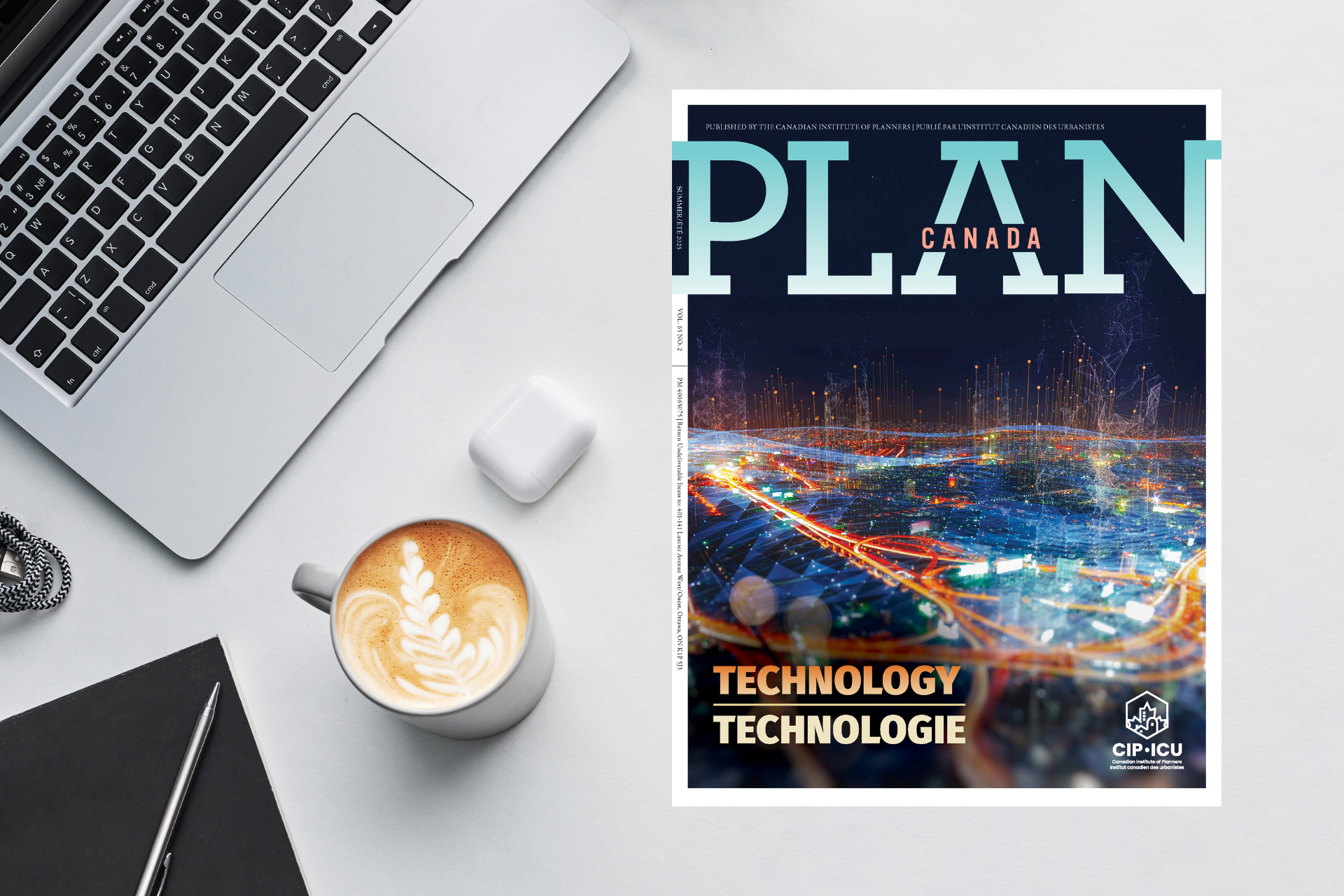Editor’s Note by Harrison Ellis RPP, MCIP
Tech at the Core of Planning
Technology, in its many forms, has always been a fundamental tool for understanding and engaging with communities. When we issued our call for articles for the Summer 2025 edition on Planning and Technology, we envisioned an issue that would capture the disruptive effects of generative artificial intelligence on our profession. We also wanted to show how different forms of technology are deeply intertwined throughout planning, from housing development, to public health and climate adaptation. As planners, technology has always been with us – whether we are using markers and sticky notes to record a charrette, to using software to optimize and visualize demographic data, to the review of development applications.
Planners are trusted with the task of shaping communities for current and future generations. In order to do this, we need to understand our communities, collaborate with partners, and act as facilitators for change. Technology is increasingly central to each of these functions. The Committee is thrilled to present a range of articles with case studies across the country that represent the current relationships between planners and both emerging and current technologies.
Data is key to generating knowledge about the world and our communities; the way it is collected, managed, and visualized. Dan Hiebert shares with us the superdiversity in Canadian Cities dashboard, which fosters a more complex understanding of immigration trends and policy at the national and the metropolitan scale. This GIS-based tool allows users to visualize how combinations of trends,
individual traits, and outcomes are concentrated and dispersed, which can support planning and policy development.
CIP has focused heavily on housing choice and affordability, and Metro Vancouver is playing a crucial role in information sharing and policy coordination. Mikayla Tinsley, Marina Jozipovic, and Jessica Hayes introduce two online tools: a database of housing policies across the region, and an interactive inclusionary housing calculator, that allows users to factor in numerous economic and regulatory indicators to determine the feasibility of affordable housing developments.
The City of Edmonton has emerged as a leader in innovation and technology, due to its proactive approach in managing intense growth over periods of boom and bust. Edmonton has set the course in the adoption and optimization of generative AI in the development process. Lyla Peter and Jason Doerksen illustrate how City staff have reimagined how they work, including the development of zoning by-law regulations designed for automation, and through the auto-review project, the City has expedited the homebuilding process.
Further to the City of Edmonton’s leadership role in the technology space, the City has partnered with the Future Cities Initiative, at the University of Waterloo, to connect students with AI focused experiential learning opportunities. Leia Minaker, Kris Andreychuk, and Robin Mazumder share with us a range of examples of innovating partnerships among the Future Cities Initiative and forward-thinking cities across Canada. The institute is working to build and democratize tools that help municipalities achieve their goals related to housing, sustainable infrastructure, and data integration and visualization.
Technology is shaping how development happens from highly urbanized municipalities, to some of the most remote. AI is being harnessed by planning departments in northern and remote communities to ease capacity challenges. Jesse Ajayi and Kate Macmillan discuss how AI software is producing repeatable and verifiable results in Rankin Inlet and across Nunavut. This type of software can reduce administrative workloads and support development applications in Rankin Inlet, where staff turnover can be high.
While the onset of AI related tools is being utilized to reduce administrative workloads and approval timelines, generative AI’s use in engagement related tasks represents an encroachment into more complicated territory. Pamela Robinson and Morgan Boyco ponder the ethical questions around AI in the participatory process, while taking stock of the emerging guidance for planning practitioners of the risks of integrating generative AI into decisions that require human oversight.
CIP national policies emphasize the importance of experimenting with innovative technologies in health and climate change. Owen Wiseman explores how urban planning and healthcare sectors can collaborate using spatial data and technology to design healthier cities, reduce healthcare costs, and promote equitable access to nature. The NatureScore application contains an algorithm that
quantifies nature rich or deficient areas, with links to health outcomes.
As Canada’s East Coast increasingly grapples with wildfires and climate related disasters, planners can learn from Oleksandr Rossolov, Namrata Bhaumik, and Ahsan Habib, who are investigating the role of crowd behaviour on emergency evacuations, with an accessibility lens. The Dalhousie Transportation Collaboratory (DalTRAC) is harnessing the power of virtual reality (VR) to understand how persons with different abilities respond to evacuation processes in the Halifax Regional Municipality.
Whether planners are working on development approvals and affordable housing socio-economic analysis, emergency response, or the ethics of all of the above, technology continues to shape how we advance and protect the public interest. We hope that these articles will inspire further research, reflection, and experimentation with new technologies, anchored in a human-centered perspective
and practice. Let’s continue to use the evolving tools available to us to meet the current multifaceted challenges that we face in our work.
How to Read This Issue of Plan Canada
Are you a CIP member?
Not a CIP member?
About the Editor
Harrison Ellis RPP, MCIP
Harrison is a Registered Professional Planner focused on supporting Indigenous communities. His work with Dillon Consulting has focused on needs assessments for housing and facilities, land use plans, and strategic planning. He holds graduate degrees in Planning from Dalhousie University and International Public Policy from Wilfrid Laurier University.
